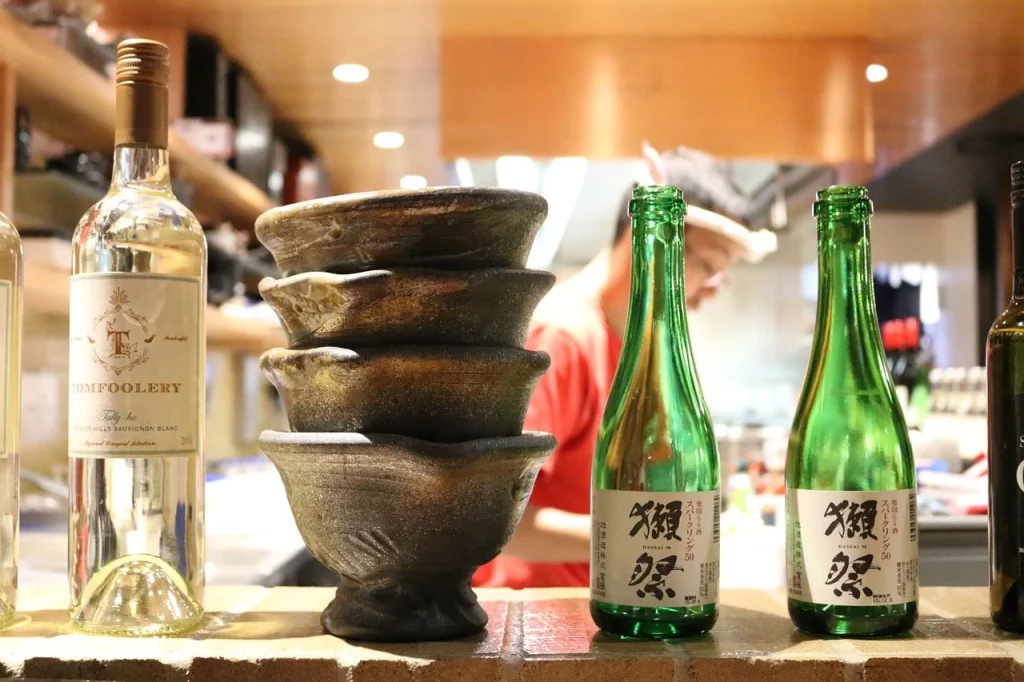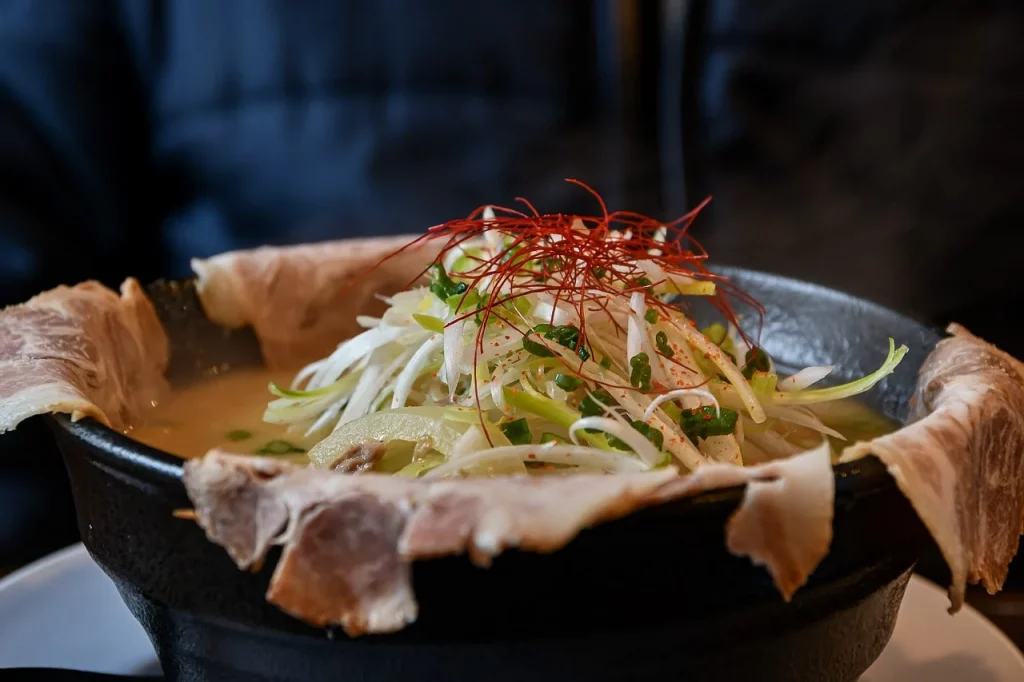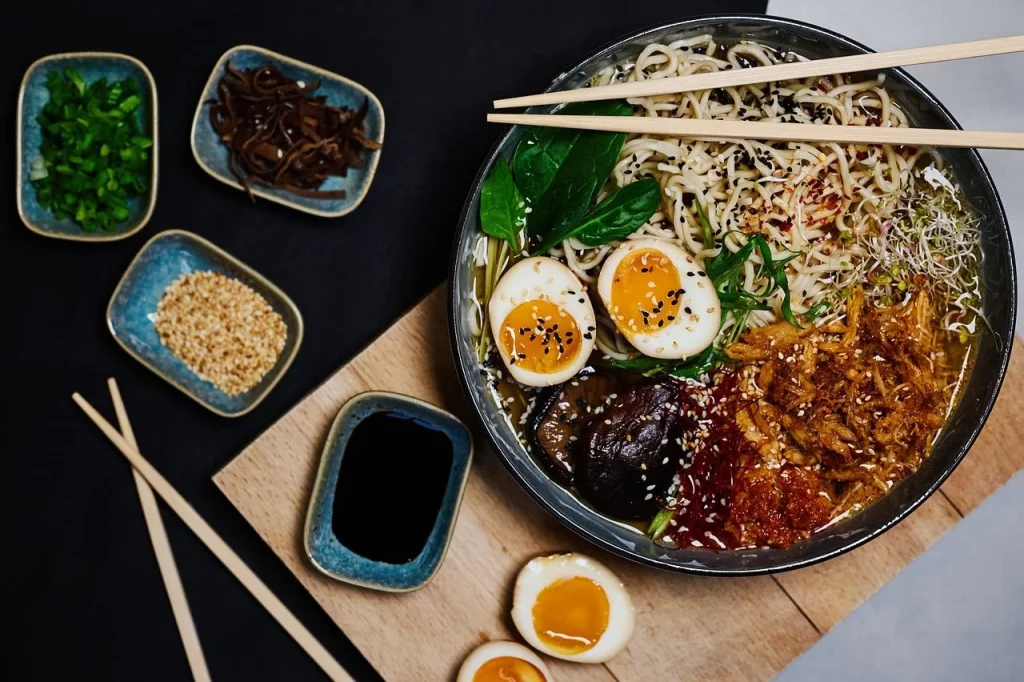Welcome to the world of ramen, where noodles aren’t just a dish; they’re a way of life! From the bustling streets of Tokyo to the cozy nooks of New York, ramen has slurped its way into the hearts of foodies worldwide.
In this journey through all these ramen facts, we’re diving noodle-first into the steamy, savory, and sometimes surprising universe of this beloved dish. Did you know that the longest ramen noodle ever made could practically wrap around a small planet? Okay, maybe not a planet, but it was impressively long!
We’ll explore everything, from its humble beginnings to its current status as a global culinary superstar. Are you ready to embark on this adventure and discover if there’s more to ramen than just being a midnight snack for college students?
Ramen is a passion, an art, and a lifelong pursuit for perfection.
Keizo Shimamoto
Ramen Facts
Before we start our journey, keep in mind this: I created a quiz at the end of the article to test your knowledge and see if you are a true ramen master. Read carefully, and don’t disappoint me.
- Ramen originated in China, but Japan popularized and transformed it into the dish known worldwide today.
- Instant ramen was invented by Momofuku Ando in 1958.
- The first instant ramen flavor was chicken.
- In Japan, ramen is considered a fast food, contrasting with its gourmet status in other countries.
- There are over 10,000 ramen restaurants in Tokyo alone.
- Ramen noodles are made using kansui, an alkaline mineral water.
- The slurping sound while eating ramen is considered a sign of enjoyment in Japan.
- Tsukemen, where noodles are dipped in broth, is a popular ramen variation.
- In Japan, ramen broth flavors are mainly shoyu (soy sauce), miso, shio (salt), and tonkotsu (pork bone).
- Famed for its richness, Hokkaido’s miso ramen often includes corn and butter.
- Ramen museums exist in Yokohama and Osaka, showcasing the dish’s history and variety.
- Ramen chefs often train for years to master broth and noodle making.
- Ichiran, a famous ramen chain, offers solo dining booths for focused eating.

- In Fukuoka, ramen stalls (yatai) are a common sight, serving locals and tourists alike.
- Instant ramen was voted the greatest Japanese invention of the 20th century in a national poll.
- The longest ramen noodle ever made measured 3,084 meters (10,119 feet).
- Ramen is often topped with chashu (pork slices), nori (seaweed), and a soft-boiled egg.
- Kaedama is a service in ramen shops where you can request extra noodles.
- Unique to Kyushu, tonkotsu ramen has a milky, pork bone-based broth.
- Ramen-inspired desserts have been created, including ramen panna cotta and ramen chocolate.
- Ramen toppings vary regionally, with local ingredients and flavors influencing the dish.
- In recent years, vegan and vegetarian ramen options have become increasingly popular.
- Some ramen chefs use aged, fermented noodles to enhance flavor and texture.
- Menma, fermented bamboo shoots, is a common ramen topping.
- Ramen soup can be oil-based or clear, depending on the style and ingredients.
- Instant ramen cup noodles were introduced in 1971, revolutionizing the way ramen is consumed.
- Ramen eating contests are popular in various countries, challenging participants to eat large quantities quickly.
- Akamaru Shinaji, a modern ramen dish, was created by the famous Ippudo chain.

- Several cities in Japan, like Sapporo and Kitakata, are famous for their distinct ramen styles.
- Some ramen shops offer secret menus with exclusive dishes not listed publicly.
- The film “Tampopo” is a Japanese comedy that centers around the quest for the perfect ramen.
- Ramen broth can take up to 12 hours or more to prepare in traditional recipes.
- Instant ramen museums in Osaka and Yokohama allow visitors to create their own ramen flavors.
- Wavy noodles are typically used in ramen to better hold onto the broth.
- Shin-Yokohama Raumen Museum offers a “Ramen passport,” allowing visitors to try different ramen styles from across Japan.
- Onomichi ramen, from Hiroshima, features a unique soy sauce-based broth with chicken and fish stock.
- Garlic oil (mayu) is a popular topping in Kyushu ramen for added flavor.
- In the 1980s, the term “ramen boom” was coined in Japan due to the dish’s surging popularity.

- Ramen noodles have a specific texture and firmness, varying greatly from other noodle types.
- Some ramen chefs create their own artisanal noodles, carefully selecting flour and other ingredients.
- Ramen is often paired with gyoza (dumplings) and rice as a complete meal in Japan.
- The word “ramen” is derived from the Chinese word lamian, meaning “hand-pulled noodles.”
- Annual ramen expos in Japan showcase new trends and innovations in the ramen industry.
- Asahikawa ramen, from Hokkaido, is known for its soy sauce-based broth and layer of lard to keep the soup hot.
- Ramen variations can include different meats like beef, chicken, and seafood.
- The Ramen Database in Japan documents over 40,000 ramen shops, including reviews and details.
- Regional ramen festivals in Japan celebrate local variations and flavors.
- Instant ramen packaging is often designed with colorful, eye-catching graphics to attract consumers.
- Seasonal varieties of ramen, such as cold ramen in summer, showcase the dish’s adaptability to different climates.
- Some ramen chefs experiment with unconventional ingredients like truffles and cheese, blending traditional and modern flavors.
Ramen Myths

Now that we’ve explored the authentic facts about ramen, it’s time to move on to the next section. It’s time to separate the truth from the myth.
- Ramen is Just a Cheap, Low-Quality Food
While often associated with budget-friendly, instant versions, ramen is a diverse dish. In its traditional form, it’s a culinary art, with chefs dedicating years to perfecting broth, noodles, and toppings. High-quality gourmet ramen is widely celebrated in Japan and worldwide. - All Ramen Noodles are the Same
There’s a wide variety of ramen noodles, influenced by region and recipe. Some are thin and straight, while others are thick and wavy. The texture and flavor are carefully chosen to complement the broth and toppings, showing the dish’s complexity. - Ramen Originated in Japan
Ramen actually has Chinese origins, introduced to Japan in the late 19th or early 20th century. It was adapted and evolved in Japan, becoming the unique and beloved dish we know today, demonstrating the fluidity of culinary traditions. - Ramen is Always a Meat-Based Dish
While pork or chicken broth is common, there’s a growing trend toward vegetarian and vegan ramen. These dishes use rich, flavorful broths made from seaweed, mushrooms, and other plant-based ingredients, catering to diverse dietary preferences. - Instant Ramen is a Good Representation of Traditional Ramen
Instant ramen, while convenient, is a far cry from traditional ramen. The latter involves carefully simmered broths and fresh ingredients, offering a depth of flavor and quality that instant versions typically cannot match.
No products found.
Ramen Quotes

Ramen, a dish that has transcended its humble beginnings, has become a global culinary icon. Below, I am sharing with you some of my favorite quotes about this dish. If you know more, share them with me in the comments so I can add them to the list.
Ramen is a dish that’s very high in calories and sodium. One way to make it slightly healthier is to leave the soup and just eat the noodles.
Andy Bellatti
A brief insight by Andy Bellatti, a renowned dietitian, emphasizing the high calorie and sodium content of ramen and suggesting a healthier way to enjoy it.
In Japan, ramen is not a dish, it’s an art form.
Toshiro Kurokawa
Toshiro Kurokawa, a respected Japanese chef, highlights the cultural significance and craftsmanship inherent in the preparation of ramen in Japan.
Life is too short to eat bad ramen.
Masaharu Morimoto
A culinary philosophy from Masaharu Morimoto, an acclaimed Japanese chef, underscoring the importance of quality in the ramen experience.
Ramen is the soul food of Japan.
Shizuo Tsuji
Shizuo Tsuji, a celebrated Japanese culinary expert, captures the deep emotional and cultural connection between ramen and the Japanese people.
Eating ramen is a sensory experience, it’s not just about taste, but also about the aroma and texture.
Ivan Orkin
Ivan Orkin, a renowned chef known for his expertise in ramen, describes the multi-sensory experience of enjoying this beloved dish.
Ramen FAQ

We are getting closer to the quiz, but before that, let’s see the answers to some common questions about ramen that you can find online.
- How are ramen noodles made?
They are typically made from wheat flour, water, salt, and sometimes alkaline minerals like kansui. The dough is kneaded, rolled out, and cut into thin noodles. These noodles can be air-dried or flash-fried to create the different textures and types of ramen you find in stores or restaurants. - Is ramen bad for you?
Ramen can be a tasty and convenient meal, but it’s important to consume it in moderation. Instant ramen, in particular, is often high in sodium, saturated fats, and lacks essential nutrients. However, homemade or restaurant-made ramen with fresh ingredients can be a more balanced and nutritious choice when enjoyed occasionally. - Can ramen noodles go bad?
Yes, like any other food, they can go bad over time. Check the expiration date on the packaging, and if they are stored properly in a cool, dry place, they should last for several months or even longer. If the noodles develop an unusual odor, flavor, or appearance, it’s best to discard them. - Are ramen noodles vegan?
Ramen noodles themselves are typically vegan, as they are made from flour, water, and salt. However, you should be cautious when choosing ramen flavoring packets or broths, as some may contain animal-derived ingredients like meat or seafood flavorings. To make vegan ramen, opt for vegetable-based broths and flavorings. - Can ramen noodles kill dogs?
While ramen noodles themselves are not inherently toxic to dogs, feeding them ramen or any human food in excessive amounts can be harmful. The high sodium content in many ramen flavor packets is not suitable for dogs, as it can lead to salt poisoning or other health issues.
No products found.
Ramen Trivia

Dive into our Ramen Quiz and test your noodle knowledge! Beware, though – a wrong answer could leave you trying to eat ramen with a fork!
Conclusion
In conclusion, delving into the world of ramen has been an absolute delight. From its humble origins in China to its evolution into the beloved Japanese comfort food we know today, ramen has certainly earned its place in culinary history.
With a fascinating array of regional variations, noodle types, and broths to explore, there’s always something new to discover on your ramen journey. But let me ask you this: Have you found your perfect bowl of ramen yet? Let me know in the comments.
5 Sources Used For This ArticleRamen: Japan’s Comfort Food Goes Global – The Women Team
Are Ramen Noodles Vegan? – Gina B Nutrition
Does Ramen Noodles Contain Dairy? – Casadesante
Guide to Ramen Varieties – Serious Eats



1 Comment
segelyacht mieten